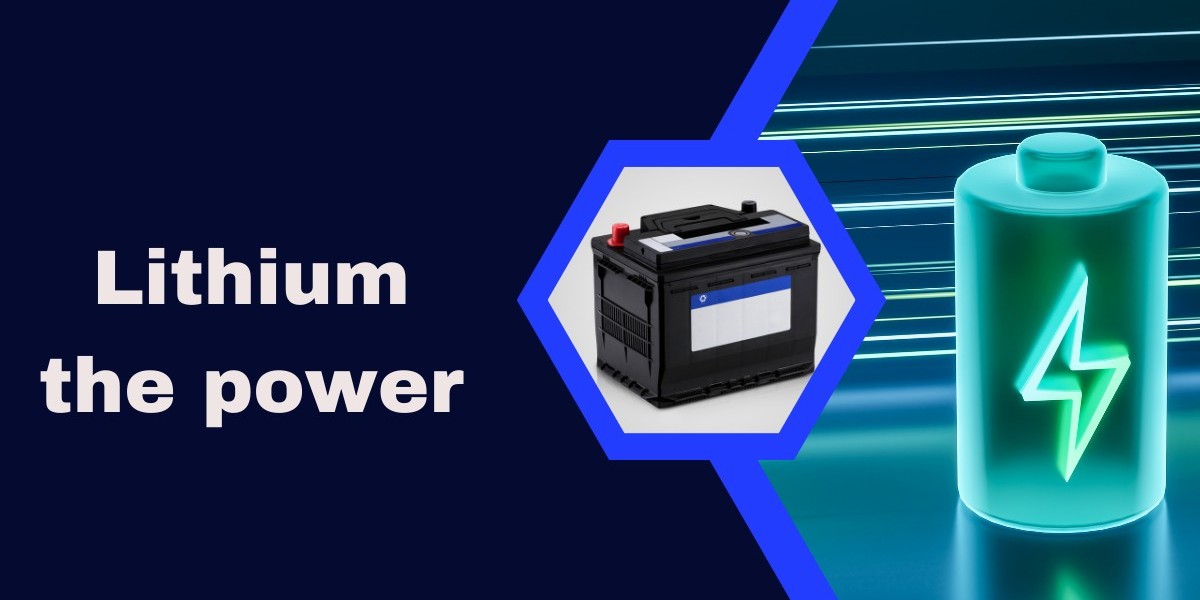In the fast-paced world of technology, lithium has become a cornerstone in driving innovation, powering everything from smartphones to electric cars. The versatility of this element makes it indispensable in many industries, particularly in energy storage. As the demand for cleaner, more efficient energy solutions grows, lithium continues to shape the future of how we store and use power. Let’s explore how this lightweight metal is influencing our lives today, its various applications, and what the future holds.
What is Lithium?
Lithium is a soft, silver-white alkali metal that is highly reactive and is the lightest metal on the periodic table. It was first discovered in 1817 by Swedish chemist Johan August Arfvedson. Despite being a relatively rare element, it has profound implications for various industries, mainly due to its high electrochemical potential. Lithium is not just crucial for technological advancement but also for creating more sustainable energy solutions.
Why is Lithium Important?
One of the most critical factors behind the importance of lithium is its role in energy storage, particularly in lithium-ion batteries. These batteries power everything from your smartphone to electric vehicles, making lithium an essential part of our daily lives. But lithium isn't just important for gadgets; it's helping industries transition to greener energy, which is crucial as the world pushes toward reducing carbon emissions.
The Role of Lithium in Batteries
If you've used a smartphone, laptop, or electric vehicle recently, you've interacted with lithium. Lithium-ion batteries are widely considered the gold standard for rechargeable energy storage solutions, mainly because they are light and can store more energy than other batteries. Here are a few reasons why lithium is such a powerful component in batteries:
- High energy density: Lithium-ion batteries can store a significant amount of energy for their size.
- Rechargeability: These batteries can be recharged hundreds or even thousands of times.
- Lightweight: Lithium is the lightest metal, making these batteries ideal for portable devices.
According to a report by the International Energy Agency (IEA), global demand for lithium is expected to increase 40 times by 2040, driven mainly by the electric vehicle (EV) sector. This massive growth reflects the importance of lithium in the push toward renewable energy.
Lithium Mining: How Is Lithium Extracted?
To meet growing demand, lithium mining has become a major industry, particularly in countries like Australia, Chile, and China. There are two primary methods for extracting lithium:
- Hard rock mining: Involves extracting lithium-containing minerals like spodumene from the earth.
- Brine extraction: This method uses natural salt lakes to extract lithium, a process most commonly used in South America.
Each method has its advantages and environmental challenges. Hard rock mining is faster but more energy-intensive, while brine extraction is less invasive but slower. As global demand continues to rise, companies are exploring ways to make lithium extraction more environmentally friendly.
Environmental Impact of Lithium Mining
While lithium is essential for creating sustainable energy storage solutions, the process of mining it can have significant environmental effects. One major concern is water usage, particularly in brine extraction. Lithium-rich brine pools in countries like Chile require vast amounts of water, which can affect local ecosystems and water supplies. Mining operations in arid regions can also lead to soil degradation and deforestation.
However, innovation is underway. New technologies and methods, like direct lithium extraction, are being explored to reduce the environmental impact. Companies are also working on recycling existing lithium-ion batteries to recover lithium and reduce the need for mining.
Lithium in Medicine
Apart from its role in technology, lithium has applications in the medical field, particularly in the treatment of bipolar disorder. Lithium carbonate is a common medication prescribed to stabilize mood and prevent manic or depressive episodes. Research shows that lithium can reduce the risk of suicide and relapse in patients suffering from severe mood disorders, making it an invaluable tool in mental health care.
Future of Lithium in Electric Vehicles
As the world shifts toward sustainable transportation, the electric vehicle (EV) industry is one of the primary drivers of lithium demand. Automakers are racing to develop longer-lasting batteries that charge faster and are more efficient. For example, Tesla, a leader in the EV industry, has been at the forefront of lithium battery innovation. The company’s Gigafactories are designed to produce high volumes of lithium-ion batteries to meet the increasing demand for electric cars.
According to a report by Bloomberg New Energy Finance, over 58% of passenger vehicle sales will be electric by 2040, meaning the demand for lithium-ion batteries will only continue to rise. This shift to EVs not only reduces our reliance on fossil fuels but also highlights the importance of lithium as we transition to cleaner energy alternatives.
Can We Recycle Lithium Batteries?
As more devices and vehicles run on lithium-ion batteries, recycling them has become a pressing issue. Recycling batteries can recover valuable materials, including lithium, nickel, and cobalt, which can then be used to create new batteries. This reduces the environmental impact of mining and lowers production costs.
Currently, only about 5% of lithium batteries are recycled, but new technologies are emerging to make the process more efficient. Companies like Redwood Materials, founded by former Tesla CTO JB Straubel, are working to scale battery recycling to reduce the need for new mining operations.
Lithium vs. Other Battery Technologies
While lithium-ion batteries are the current industry standard, researchers are continuously exploring alternatives. Solid-state batteries, for instance, could potentially store more energy and offer higher safety levels by using a solid electrolyte instead of a liquid one. However, these technologies are still in the early stages of development and may not be commercially viable for years.
Another alternative is sodium-ion batteries, which are less expensive but also less energy-dense than lithium batteries. While these alternatives show promise, lithium-ion technology continues to dominate the market due to its well-established production infrastructure and proven reliability.
Is There Enough Lithium to Meet Global Demand?
As demand for lithium grows, questions arise about whether there is enough of the element to meet global needs. According to the U.S. Geological Survey, the world has about 86 million tons of identified lithium resources, most of which are located in South America and Australia. While this seems like a lot, the increasing demand from industries like electric vehicles could strain supply chains.
To address this issue, companies and governments are investing in new mining operations and technologies to extract lithium more efficiently. Additionally, battery recycling will play a critical role in extending the supply of lithium by recovering the element from used batteries.
The Future of Lithium: What's Next?
As the world continues to move toward greener energy solutions, lithium will remain a crucial element in our quest for a more sustainable future. The development of new battery technologies, improvements in mining and recycling processes, and increased demand from the EV sector will all drive the evolution of lithium use in the coming decades.
Industry leaders are optimistic about the future of lithium. Elon Musk, the CEO of Tesla, has often referred to lithium as the "new oil" due to its importance in powering the next generation of energy solutions. Lithium will undoubtedly play a vital role in the global energy transition, shaping everything from how we store energy to how we move around the planet.
Frequently Asked Questions
What is lithium used for?
Lithium is primarily used in lithium-ion batteries, which power devices like smartphones, laptops, and electric vehicles. It is also used in some medical treatments for mental health conditions.
Where is most lithium mined?
The majority of lithium comes from countries like Australia, Chile, and China, with the largest reserves located in South America.
Can lithium be recycled?
Yes, lithium can be recycled from used batteries. However, the current recycling rate is relatively low, though new technologies aim to improve this.
What are the environmental impacts of lithium mining?
Lithium mining can have significant environmental impacts, including water usage and habitat disruption. However, companies are working on reducing these effects through more sustainable mining practices.
Why is lithium important for electric vehicles?
Lithium is essential for electric vehicle batteries because it is lightweight and can store a large amount of energy. This makes it ideal for powering electric cars and other transport technologies.
What are the alternatives to lithium-ion batteries?
Researchers are exploring alternatives like solid-state batteries and sodium-ion batteries. However, lithium-ion technology remains the most widely used and efficient for now.
Conclusion
Lithium is undoubtedly one of the most critical elements driving modern technological advancements. Its unique properties make it ideal for use in energy storage, particularly in lithium-ion batteries. As industries continue to innovate and explore more sustainable solutions, the role of lithium will only grow. Whether through mining, recycling, or alternative battery technologies, lithium is set to remain a cornerstone of the global energy landscape for years to come.


